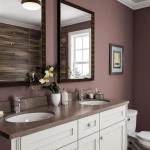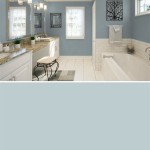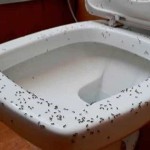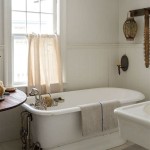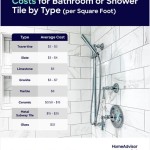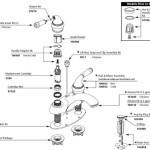Bathroom Vanities and Cabinet Sets: A Comprehensive Guide
Bathroom vanities and cabinet sets are integral components of bathroom design, offering both functional storage and aesthetic appeal. Choosing the right vanity and cabinet combination requires careful consideration of space, style, storage needs, and budget. Understanding the different types of vanities, cabinet materials, styles, and installation options will help in making an informed decision that contributes to a well-organized and visually pleasing bathroom.
The primary function of a bathroom vanity is to provide a dedicated space for the sink and surrounding plumbing. Additionally, vanities offer storage for toiletries, cleaning supplies, and other bathroom essentials, helping to maintain a tidy and clutter-free environment. Cabinet sets, often complementing the vanity, extend storage capacity and contribute to a cohesive design scheme. These sets may include wall-mounted cabinets, linen towers, and other storage solutions tailored to the specific needs of the bathroom.
Key Point 1: Types of Bathroom Vanities
Bathroom vanities are available in a wide array of styles and configurations, each offering unique advantages. Selecting the appropriate type depends on the bathroom's layout, size, and desired aesthetic. The following are some common types of bathroom vanities:
Freestanding Vanities: Freestanding vanities are the most common type. They stand directly on the floor and are relatively easy to install. They offer a variety of styles, from traditional to contemporary, and are available in diverse sizes. Freestanding vanities provide ample storage and are suitable for bathrooms of all sizes, though they are especially well-suited for larger bathrooms due to their space requirements.
Wall-Mounted Vanities: Also known as floating vanities, wall-mounted vanities are attached directly to the wall, creating a modern and minimalist look. This type of vanity frees up floor space, making the bathroom appear larger and facilitating easier cleaning. Wall-mounted vanities are a good choice for smaller bathrooms or for those seeking a contemporary aesthetic. However, installation can be more complex as it requires ensuring adequate wall support for the vanity's weight, especially when fully loaded with items.
Corner Vanities: Corner vanities are designed to fit snugly into a corner, maximizing space in smaller bathrooms or powder rooms. These vanities are typically triangular or L-shaped and offer a practical solution for utilizing otherwise unused corners. Storage capacity may be limited compared to other types of vanities, but they are an efficient option for space-constrained bathrooms.
Double Vanities: Double vanities feature two sinks and ample counter space, making them ideal for master bathrooms shared by multiple users. They provide separate grooming areas, reducing congestion during busy mornings. Double vanities are available in various styles and configurations, including freestanding and wall-mounted options. Due to their size, they require a larger bathroom space.
Vessel Sink Vanities: Vessel sink vanities feature a sink that sits on top of the counter, rather than being recessed within it. This style adds a unique and stylish touch to the bathroom. Vessel sinks come in a variety of materials, shapes, and sizes, allowing for customization. However, the overall height of the vanity and sink must be considered to ensure comfortable use. The cabinet beneath the vessel sink can be designed specifically for this style, often featuring open shelving or minimal storage to highlight the sink itself.
Key Point 2: Materials Used in Bathroom Vanities and Cabinets
The materials used in bathroom vanities and cabinets significantly impact their durability, aesthetics, and resistance to moisture. The bathroom environment is prone to humidity and water exposure, making material selection a crucial factor. Common materials include:
Solid Wood: Solid wood is a classic choice for bathroom vanities and cabinets, offering natural beauty and durability. Hardwoods, such as oak, maple, cherry, and birch, are commonly used due to their strength and resistance to warping. Solid wood vanities are typically more expensive than those made from other materials but offer a timeless appeal and can be refinished if damaged. Proper sealing and finishing are essential to protect the wood from moisture damage.
Plywood: Plywood is an engineered wood product made from layers of wood veneer glued together. It is more resistant to warping and cracking than solid wood and is a cost-effective alternative. High-quality plywood with a water-resistant finish is suitable for bathroom applications. Plywood is often used for the cabinet boxes, while solid wood may be used for the doors and drawer fronts.
MDF (Medium-Density Fiberboard): MDF is another engineered wood product made from wood fibers, resin, and wax. It is a smooth, uniform material that is easy to paint and shape. MDF is less expensive than solid wood and plywood but is also more susceptible to moisture damage. It is important to choose MDF vanities and cabinets with a durable, water-resistant finish and to avoid prolonged exposure to water.
Particleboard: Particleboard is the least expensive engineered wood product, made from wood chips and resin. It is not as strong or durable as solid wood, plywood, or MDF, and is highly susceptible to moisture damage. Particleboard is generally not recommended for bathroom vanities and cabinets, unless it is properly sealed and protected with a water-resistant finish.
Laminate: Laminate is a synthetic material made by bonding layers of paper and resin to a substrate, such as particleboard or MDF. It is a cost-effective and durable option for bathroom vanities and cabinets. Laminate is available in a wide range of colors and patterns, including wood grain and solid colors. It is also resistant to scratches, stains, and moisture. However, laminate can be susceptible to chipping along the edges and is not as easily repaired as solid wood.
Metal: Metal vanities and cabinets offer a modern and industrial look. Stainless steel, aluminum, and other metals are durable and resistant to moisture. Metal vanities are often used in contemporary bathrooms and can be paired with glass or stone countertops. However, metal vanities can be more expensive than those made from wood or laminate and may require special cleaning products to maintain their finish.
Glass: Glass is often used for cabinet doors or shelving in bathroom vanities and cabinets. It adds a touch of elegance and allows for visibility of stored items. Tempered glass is a durable and safe option for bathroom applications. Glass can be clear, frosted, or tinted, allowing for customization of the design.
Key Point 3: Styles and Design Considerations
Bathroom vanities and cabinet sets are available in a wide range of styles, from traditional to contemporary, allowing for customization to match the overall bathroom design. Consider the existing architectural style of your home and the desired aesthetic when selecting a vanity and cabinet set. Some popular styles include:
Traditional: Traditional vanities and cabinets often feature ornate details, raised panel doors, and decorative hardware. They are typically made from solid wood with a rich finish, such as cherry or mahogany. Traditional vanities evoke a sense of timeless elegance and are often paired with classic fixtures and accessories.
Contemporary: Contemporary vanities and cabinets feature clean lines, minimalist designs, and sleek surfaces. They are often made from materials such as laminate, metal, or glass and may incorporate floating designs or integrated lighting. Contemporary vanities create a modern and sophisticated look and are often paired with geometric fixtures and accessories.
Transitional: Transitional vanities and cabinets blend elements of both traditional and contemporary styles. They feature clean lines and simple details, but may also incorporate traditional elements such as raised panel doors or decorative hardware. Transitional vanities offer a versatile and timeless look that can be adapted to a variety of bathroom designs.
Rustic: Rustic vanities and cabinets evoke a sense of natural beauty and warmth. They often feature reclaimed wood, distressed finishes, and natural stone countertops. Rustic vanities create a cozy and inviting atmosphere and are often paired with earthy tones and natural textures.
Farmhouse: Farmhouse vanities and cabinets feature simple, functional designs and a focus on natural materials. They often incorporate shiplap, barn door hardware, and apron-front sinks. Farmhouse vanities create a charming and welcoming atmosphere and are often paired with vintage-inspired fixtures and accessories.
In addition to style, consider the following design considerations when selecting a bathroom vanity and cabinet set:
Size and Configuration: Choose a vanity and cabinet set that fits comfortably within the bathroom space and provides adequate storage. Consider the dimensions of the vanity, the size of the sink, and the layout of the surrounding area. Ensure that there is enough space for comfortable movement and access to other bathroom fixtures.
Storage Needs: Assess your storage needs and choose a vanity and cabinet set that provides sufficient space for toiletries, cleaning supplies, and other bathroom essentials. Consider the number and type of drawers, shelves, and compartments needed to accommodate your belongings. Think about incorporating organizers to maximize storage efficiency.
Countertop Material: The countertop material significantly impacts the aesthetics and durability of the vanity. Common countertop materials include granite, quartz, marble, laminate, and solid surface. Choose a material that complements the style of the vanity and offers the desired level of durability and resistance to stains and scratches.
Hardware: The hardware, such as knobs, pulls, and hinges, can significantly impact the overall look of the vanity and cabinets. Choose hardware that complements the style of the vanity and is durable and easy to use. Consider the finish of the hardware and how it coordinates with other fixtures and accessories in the bathroom.
Lighting: Proper lighting is essential for a functional and visually appealing bathroom. Consider incorporating lighting fixtures into the vanity or cabinet set, such as vanity lights, sconces, or integrated LED lighting. Ensure that the lighting provides adequate illumination for grooming tasks and creates a warm and inviting atmosphere.
By carefully considering these factors, one can select a bathroom vanity and cabinet set that enhances the beauty and functionality of the bathroom, creating a comfortable and stylish space.

Best Bathroom Vanity Cabinets Cabinet Set

Magic Home 30 In X 18 Bathroom Vanity Organizer Combo Storage Cabinet Set With Undermount Sink White Slx Lmp18001 L

39 Floating White Bathroom Vanity Wall Mounted Homary

Casual Cherry Woodtone Bathroom Cabinets Omega Cabinetry

Bathroom Vanities Cabinets Made In The Us Strasser

30 Bathroom Vanity With Single Sink Cabinet Set C

More Space Vanity Modern Bathroom Vanities Cabinet Set Hanging Sets Sink With Counter Top

36 Bathroom Vanity With Sink Vanities Adjustable Shelf And Drawers Freestanding Storage Cabinet Single Combo Set For

Bathroom Vanities With Optional Sink And Mirror Homary

Bathroom Vanities Vanity Cabinets Tops Pottery Barn

